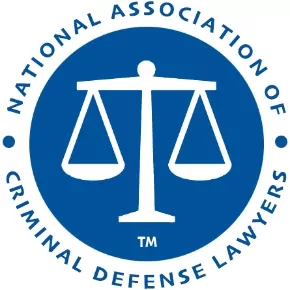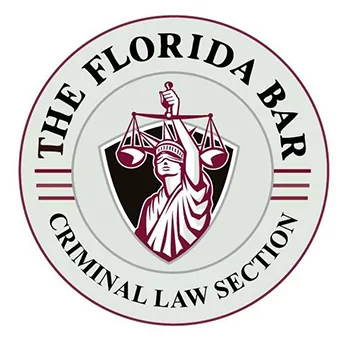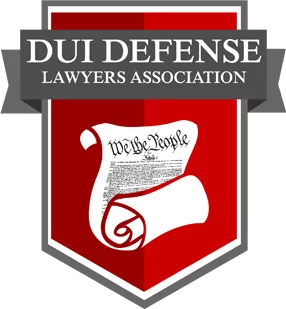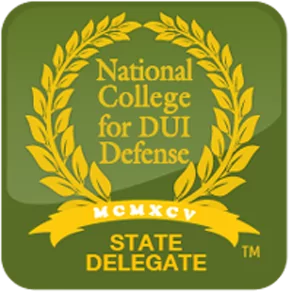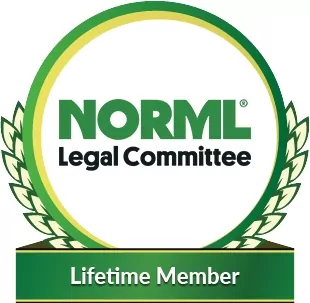Drone Crimes
As drones become more common, the Florida legislature has started to develop criminal offenses that prohibit the use of a drone in certain locations, at certain times, or for certain purposes.
In Florida, drones are known as Unmanned Aerial Systems (UAS) or the Unmanned Aerial Vehicles (UAV). A drone can range in size from a wingspans of six (6) inches to two hundred forty-six (246) feet and can weigh from approximately four (4) ounces to over 25,600 pounds. Drones may be controlled manually or through an autopilot which uses a data link to connect the drone’s pilot to the drone.
Section 934.50, F.S., defines a drone as a powered, aerial vehicle that:
- does not carry a human operator;
- uses aerodynamic forces to provide vehicle lift;
- can fly autonomously or be piloted remotely;
- can be expendable or recoverable; and
- can carry a lethal or nonlethal payload.
Laws prohibiting drone use under a variety of circumstances are listed in Section 934.50, F.S. Federal law also contains numerous criminal offenses related to operating a drone.
Attorneys for Drone Crimes in Tampa, FL
If are charged with any criminal offense related to the use of a drone, including an Unmanned Aerial Vehicles (UAV) or an Unmanned Aerial Systems (UAS), then contact an experienced criminal defense attorney at Sammis Law Firm.
We can help you fight allegations of illegally using a drone for surveillance or other prohibited purposes under Section 934.50, F.S.
Our offices are located in downtown Tampa in Hillsborough County and in New Port Richey in Pasco County. Contact us for a free consultation to discuss your criminal charges and the best ways to fight the case.
Call 813-250-0500.
Illegal Use of Drones for Surveillance
In Florida, Section 934.50, F.S., prohibits using drones for surveillance in violation of another person’s reasonable expectation of privacy.
In fact, under Section 934.50(3)(b), a real property owner, tenant, occupant, invitee, or licensee of the property is presumed to have a reasonable expectation of privacy from drone surveillance of the property or the owner, tenant, occupant, invitee, or licensee by another person, state agency, or political subdivision, if he or she cannot be seen by persons at ground level who are in a place they have a legal right to be.
Furthermore, Section 934.50(5)(b)-(d) F.S., provides for compensatory damages, injunctive relief, attorney fees, and punitive damages for a violation of s. 934.50(3)(b), F.S.
Under Section 934.50(e), the term “surveillance” is defined as:
- With respect to an owner, tenant, occupant, invitee, or licensee of privately owned real property, the observation of such persons with sufficient visual clarity to be able to obtain information about their identity, habits, conduct, movements, or whereabouts; or
- With respect to privately owned real property, the observation of such property’s physical improvements with sufficient visual clarity to be able to determine unique identifying features or its occupancy by one or more persons.
Some cities and counties have enacted ordinances to prohibit the unauthorized use of surveillance drones by private persons when the use of the drone invades the privacy rights of citizens.
The victim of such conduct may “initiate a civil action for compensatory damages for violations of this section and may seek injunctive relief to prevent future violations of this section against a person.” § 934.50(5)(b), Fla. Stat. (2021).
Drones Causing Substantial Emotional Distress under Stalking Statute
In addition to initiating an action under Florida Statute Section 934.50 for invasion of privacy, the victim might also be able to file for an injunction for protection against stalking based on the substantial emotional distress provision of the stalking statute.
For instance, in Rosaly v. Konency, 47 Fla. L. Weekly D1800c, a Fourth DCA case dated August 31, 2022, the court found that the use of a drone (along with other evidence) might support the issuance of an injunction. The court found:
“The use of a drone can contribute to causing a person substantial emotional distress under section 784.048(1)(a).
The Florida legislature amended section 934.50, Florida Statutes, in 2015 to prohibit certain conduct involving drones. The staff analysis for the amendment recognized that “drones possess capabilities which could be used by private individuals . . . to breach reasonable expectations of privacy, including the voyeuristic actions of spying on and recording private acts.” Fla. S. Comm. on Judiciary, CS/SB 766 (2015), Post-Meeting Staff Analysis 3 (March 26, 2015), https://www.flsenate.gov/Session/Bill/2015/766/Analyses/2015s0766.ju.PDF. “[D]rones can be equipped with a wide array of sensory equipment, including high-magnification lenses, infrared, ultraviolet and see-through imaging devices, acoustical eavesdropping devices, laser optical microphones, and face and body recognition software.” Id. “[O]ne drone outfitted with the proper equipment could” “watch a building,” “look inside the building,” and “listen[ ] to conversations taking place inside” “all [ ] at once.” Id. at 3-4.
As a result of this privacy concern, the Florida legislature amended section 934.50, Florida Statutes, in 2015. Section 934.50, as amended, imposes limits on the use of a drone. § 934.50, Fla. Stat. (2021). The statute prohibits a person from using “a drone equipped with an imaging device to record an image of . . . the . . . tenant [of a privately owned real] property with the intent to conduct surveillance on the individual or property captured in the image in violation of such person’s reasonable expectation of privacy without his or her written consent.” § 934.50(3)(b), Fla. Stat. (2021).
Furthermore, in Raulerson v. Font, 277 So. 3d 1057 (Fla. 3d DCA 2018), the third district recognized that surveillance by a drone might constitute stalking because surveillance is among the “[t]ypical hallmarks of stalking and cyberstalking.” Id. Although in that case, there was not enough evidence presented. Id. at 1063.
Prohibitions Against Weaponized Drones in Florida
Under Section 330.411, F.S., Florida law prohibits a person from possessing or operating an unmanned aircraft or unmanned aircraft system, with an attached weapon, firearm, explosive, destructive device, or ammunition.
In at least one other state, the law allows law enforcement agencies to utilize weaponized drones of a non-lethal variety including tear gas, rubber bullets, beanbags, pepper spray, or tasers, but law enforcement agencies in Florida are not allowed to operate weaponized drones.
Changes in Florida’s Drone Laws
Recently proposed bills have sought to amend the definition of “critical infrastructure facility” in s. 330.41, F.S., to include:
- state correctional institution or a private correctional facility;
- secure juvenile detention center or facility;
- nonsecure residential facility;
- high-risk residential facility;
- maximum-risk residential facility; and
- county detention facility.
Other bills have sought to amends s. 934.50, F.S., to include exceptions to the prohibitions against drone use currently found in the “Freedom from Unwarranted Surveillance Act.” The act creates exceptions for:
- Facilitating the collection of evidence at a crime scene or traffic crash scene; and
- Allowing drone use by a local or state agency in the assessment of damage, flood state, wildfire, or land management, or the monitoring and collection of scientific or marketing data.
Protection of Critical Infrastructure Facilities in Florida from Drone Traffic
Section 330.41, F.S., protects critical infrastructure facilities by prohibiting any person from knowingly or willfully:
- Operating a drone over a critical infrastructure facility, unless the drone is in transit for commercial purposes and is in compliance with Federal Aviation Administration (FAA) regulations;
- Allowing a drone to make contact with a critical infrastructure facility, including any person or object on the premises of or within the facility; or
- Allowing a drone to come within a distance of a critical infrastructure facility that is close enough to interfere with the operations of or cause a disturbance to the facility.
A first violation of this prohibition is a second degree misdemeanor and a second or subsequent violation is a first degree misdemeanor. A second degree misdemeanor is punishable by up to 60 days in jail and up to a $500 fine.
“Critical infrastructure facility” means any of the following, if completely enclosed by a fence or other physical barrier that is obviously designed to exclude intruders, or if clearly marked with a sign or signs which indicate that entry is forbidden and which are posted on the property in a manner reasonably likely to come to the attention of intruders:
- An electrical power generation or transmission facility, substation, switching station, or electrical control center.
- A chemical or rubber manufacturing or storage facility.
- A mining facility.
- A natural gas or compressed gas compressor station, storage facility, or natural gas or compressed gas pipeline.
- A liquid natural gas or propane gas terminal or storage facility with a capacity of 4,000 gallons or more.
- Any portion of an aboveground oil or gas pipeline.
- A wireless communications facility, including tower, antennae, support structures, and all associated ground-based equipment.
The prohibition does not apply to prohibited actions that are committed by:
- A federal, state, or other governmental entity, or a person under contract or otherwise acting under the direction of a federal, state, or other governmental entity;
- A law enforcement agency that is in compliance with s. 934.50, F.S., or a person under contract with or otherwise acting under the direction of such law enforcement agency; or
- An owner, operator, or occupant of the critical infrastructure facility, or a person who has prior written consent of such owner, operator, or occupant.
Additionally, the prohibition against operating a drone over a critical infrastructure facility does not apply to a drone operating in transit for commercial purposes in compliance with FAA regulations, authorizations, or exemptions.
Using a Drone by FWC or the Florida Forrest Service
According to the Bill Analysis prepared by the Professional Staff of the Committee on Environment and Natural Resources for 2021 CS/SB 494:
“[r]emote sensing using drones for the surveillance, detection, and reporting of an invasive species can improve early detection of invading plants and animals, making management more efficient and less expensive.57 Studies have shown that drones can efficiently and inexpensively cover a large geographic range, reach places that are difficult to access, carry a variety of cameras and sensors, collect biological specimens, and target and eliminate individual organisms through ballistic application of herbicides.”
For these reasons, Section 934.50(4)(p), F.S., provides an exception to the prohibition that allows a non-law enforcement employee of FWC or the Florida Forest Service to use a drone to manage or eradicate invasive exotic plants or animals on public lands and to suppress wildfire threats.
Using a Drone to Bring Contraband into State Facilities
Over the past few years, there have been several reported incidents involving drones being used to drop contraband into prison yards. As a result, at least ten (10) states have passed laws to prohibit the use of drones near prisons under certain circumstances.
In Florida, it is a felony to introduce contraband into or upon the grounds of a state correctional institution, a juvenile detention facility or commitment program, or a county detention facility.
Florida defines the term “state correctional institution” to mean “any prison, road camp, prison industry, prison forestry camp, or any prison camp or prison farm or other correctional facility, temporary or permanent, in which prisoners are housed, worked, or maintained, under the custody and jurisdiction of the Department of Corrections Privatized prisons are authorized by ch. 957, F.S.”
Using Drones for Traffic Crash Investigations
Law enforcement officers in Florida are starting to use drones for traffic crash scene investigations and reconstruction. The drone allows for a more effective investigation and a faster way to clear the roadway.
Section 934.50, F.S., prohibits law enforcement agencies from using a drone to gather evidence, although several exceptions apply. When the drone is used by officers in a prohibited way, the evidence obtained is not admissible in a criminal prosecution in any court of law.
The party that suffers damages because of the illegal use of a drone by law enforcement officers is permitted to initiate a civil action against a law enforcement agency to obtain all appropriate relief in order to prevent or remedy a violation of s. 934.50, F.S.
This article was last updated on Friday, August 31, 2022.






